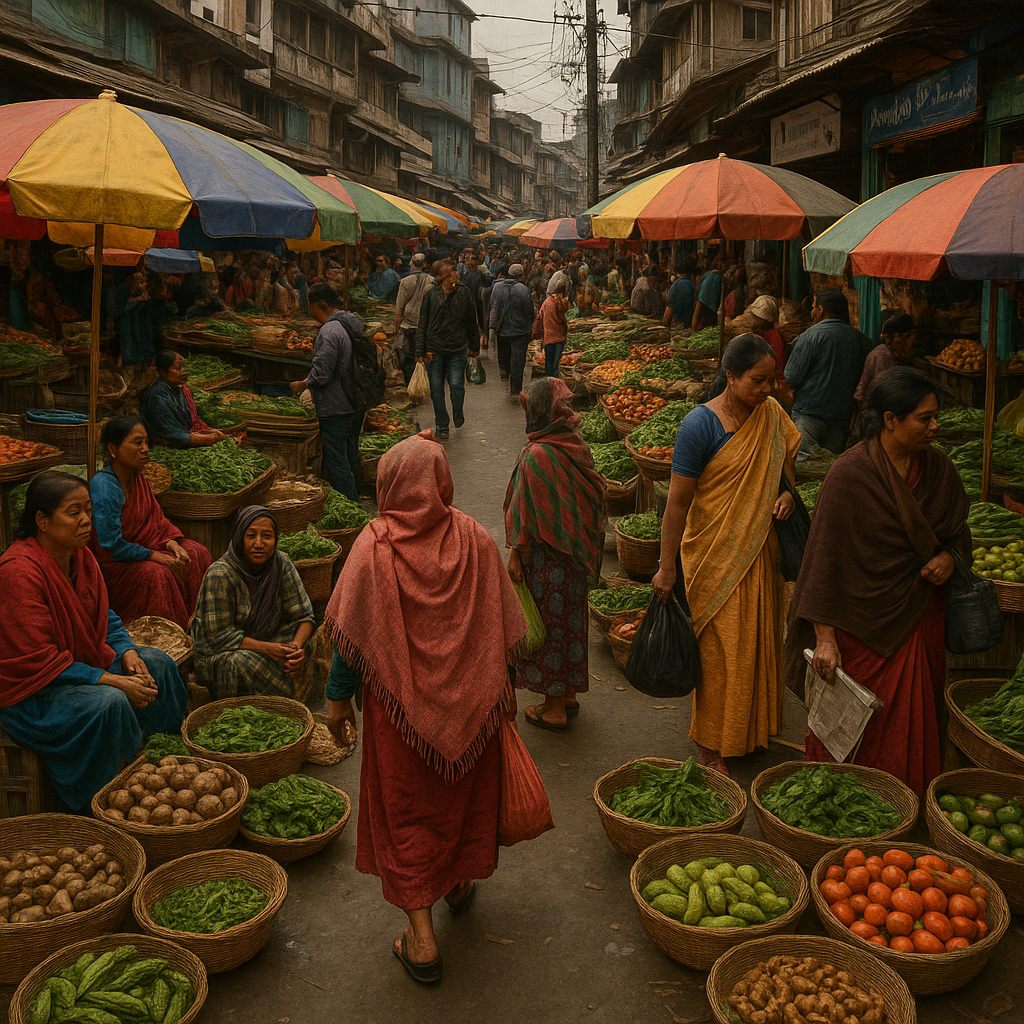Markets of Meghalaya: Where Culture, Cuisine, and Community Come Alive
Meghalaya’s markets are more than just trading hubs – they are vibrant spaces where tradition, taste, and togetherness converge. Among these, Iewduh Market and Bara Bazaar in Shillong stand out as bustling epicentres of life, offering travellers an immersive experience into the cultural heartbeat of the state. These markets are a sensory playground – alive with aromatic fresh produce, the colours of woven shawls, and the rhythmic chatter of locals exchanging stories and laughter.
Iewduh Market: A Lively Melting Pot
Known as Shillong’s largest and most chaotic market, Iewduh is an adventure. Here, stalls overflow with everything from fresh herbs and spices to bamboo crafts, handmade garments, and traditional jewellery. The market exudes a sense of authenticity – a place where daily life unfolds amidst tradition. You’ll find Khasi women seated on the ground, surrounded by piles of leafy greens, root vegetables, and aromatic spices. Alongside them are shops offering pork cuts, smoked meats, and fermented fish, staples of local cuisine that provide a window into the state's culinary heritage.
Iewduh is also a place of inter-community exchange, where traders from remote villages gather to sell their produce, allowing travellers to witness Meghalaya’s rural diversity all under one roof.
Bara Bazaar: Where Heritage Meets Everyday Life
Smaller but equally spirited, Bara Bazaar offers a more compact yet colourful experience. This market is often frequented by local residents, making it an ideal stop to experience day-to-day life. Traditional fabrics like the Jainsem and Dhara are displayed next to stacks of fresh oranges and indigenous leafy vegetables. The market’s relaxed pace invites visitors to engage with shopkeepers, learn the origins of their goods, and understand the rhythms of life in Shillong.
The sense of community here is palpable – elderly vendors share stories from past festivals while young traders excitedly promote their homemade jams and pickles. Food stalls here serve up steaming plates of pitha, tungrymbai chutney, and warm tea – the perfect way to refuel after browsing.
Seasonal Local Produce to Try
While exploring these markets, keep an eye out for produce that reflects the rhythm of the seasons:
Winter (December – February):
Oranges, ginger, garlic, leafy greens like mustard leaves, wild mushrooms, and fermented bamboo shoots.
Spring (March – May):
Fresh spinach, pumpkin flowers, jackfruit, and early strawberries.
Monsoon (June – August):
Wild herbs, mushrooms, colocasia, and fermented fish preparations like ngari.
Autumn (September – November):
Pineapples, lychee, betel leaves, turmeric, and millet-based snacks.
Each season brings a new palette of flavours and textures that reflect Meghalaya’s unique geography and biodiversity.
Unique Fruits and Vegetables of Meghalaya That Define Local Cuisine
Oranges – Sweet and juicy, these are abundant in winter and a staple snack and ingredient in local dishes.
Pineapples – Known for their tangy flavour, they are enjoyed fresh or used in chutneys and desserts.
Wild Mushrooms – Foraged from forests during the monsoon, these add an earthy taste to curries and soups.
Bamboo Shoots (Soh Phlang) – Used fresh or fermented (as tungrymbai), they bring a distinct, tangy flavour to savoury dishes.
Mustard Leaves and Local Herbs – Fresh greens that add balance, texture, and a subtle spice to meals.
Jackfruit – Often cooked as a vegetable, it provides texture and richness in stews and curries.
Betel Leaves – Chewed with areca nut, these are a cultural staple and sometimes used in recipes and local remedies.
Local Delicacies to Sample While Shopping
Shopping here isn’t just about buying ingredients – it’s a culinary experience. Locals often indulge in hearty snacks and warm beverages while browsing through produce stalls. Jadoh, a spiced rice dish, and pumaloi, steamed rice cakes, are commonly shared among friends and family. Tea stalls serve strong, milky chai alongside pitha (rice cakes stuffed with jaggery and coconut), and spicy pickles made from fermented bamboo shoots or wild green herbs. These dishes not only offer comfort but also provide a glimpse into how food and community intertwine in Meghalaya’s daily life.
Why Visit?
For travellers seeking an experience beyond scenic landscapes and waterfalls, the markets of Meghalaya offer a raw and unfiltered connection to the people and culture of the region. Iewduh and Bara Bazaar are places where you don’t just shop – you participate in living traditions, discover local flavours, and witness the community spirit that defines Meghalaya. Whether you’re a culinary enthusiast, a culture seeker, or a curious traveller, these markets promise to leave you with immortal memories and a deeper appreciation for the state’s heritage.



